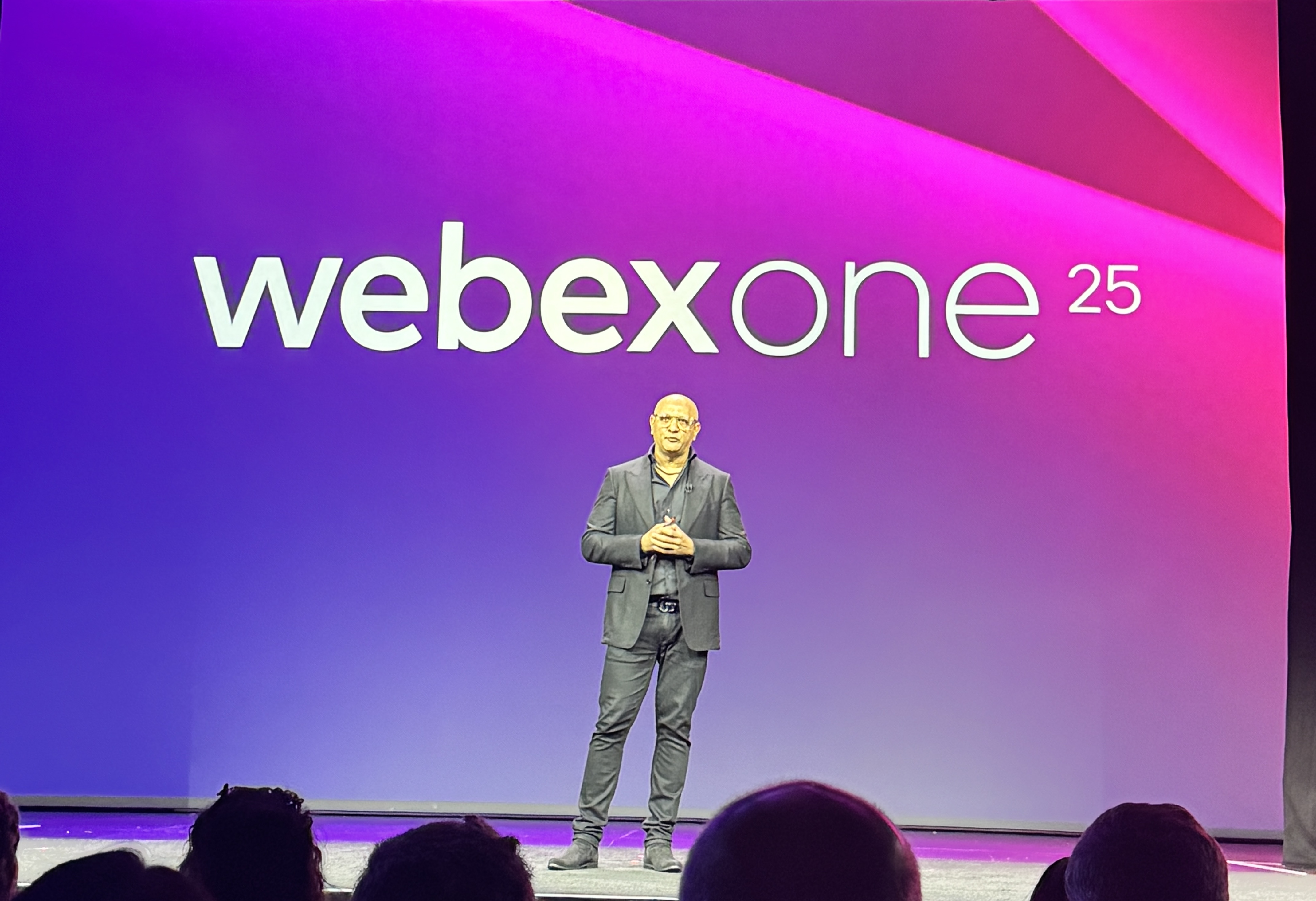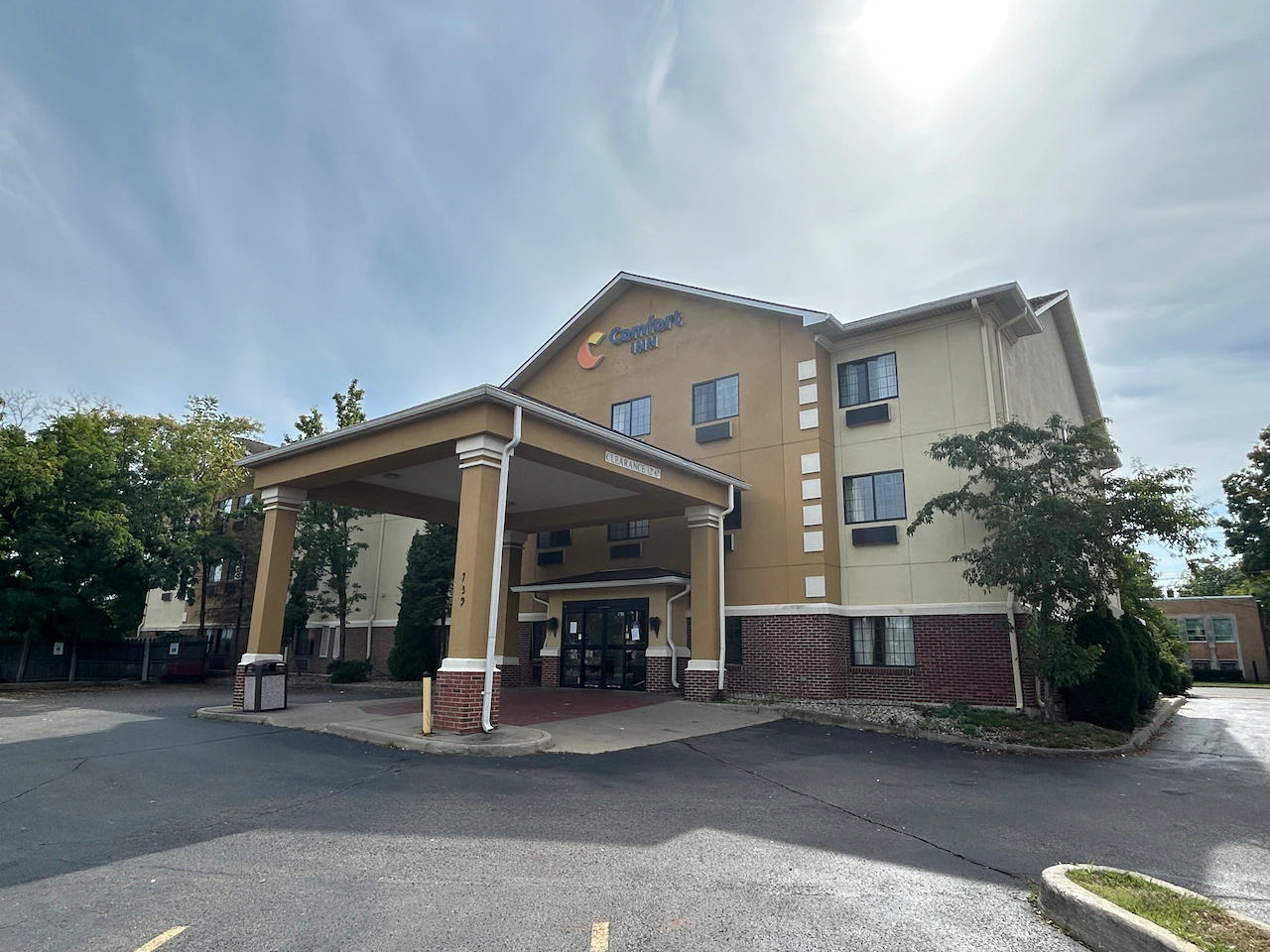
As Cisco Systems Inc. held its WebexOne conference this week in San Diego, to no one’s shock the theme of the 2025 event was artificial intelligence — and, of all the markets Cisco plays in, the ones Webex addresses have the most direct end user impact.
“We are squarely in the next era of AI, where we are moving from chat bots that answer questions to agents that are going to conduct tasks and jobs almost fully autonomously on our behalf,” said Cisco Chief Product Officer Jeetu Patel (pictured). This shift has some profound implications to enterprises, the most notable one that productivity growth will be based on team productivity and workflow automation versus individual productivity, which is where we are today.
Cisco has shifted its vision to be in line with AI trends. At the last couple of WebexOne events, the company has worked with a vision of “Distance Zero,” which is using AI to enable us to all work seamlessly regardless of where we are. Over the last couple of years Cisco has delivered innovation to fulfill on the mission. This includes new hardware such as room bars, ceiling mics, smarter cameras as well as AI features in Webex such as meeting catchup, translation and transcription.
During his keynote this year, Patel laid out where AI was going by talking about the evolution of work. Historically collaboration has been about people interaction with other people. More and more people are interacting with AI, and soon, we will have autonomous AI to AI communication and task coordination.
Cisco has evolved Distance Zero to what it calls “Connected Intelligence,” which is its vision for the future of the workplace. Patel described this as “Build a workplace today for the workforce of tomorrow – a workforce that includes both humans and agents communicating with each other.”
All the announcements at WebexOne 2025 were in support of this. Here are the notable ones:
New AI agents for Webex Suite
Cisco is integrating specialized AI agents directly into the Webex platform to tackle specific tasks:
Task Agent: Automatically generates action items from meeting transcripts and can perform tasks in third-party applications such as creating a ticket in Jira.
Notetaker Agent: Captures real-time transcriptions and summaries of meetings, including impromptu in-person sessions.
Polling Agent: Proactively listens to a meeting’s discussion and generates live polls to boost audience engagement and gain instant participant input.
Meeting Scheduler: Autonomously identifies the need for follow-up meetings, finds open times and automatically schedules meetings.
AI Receptionist for Webex Calling: An always-on virtual assistant that handles routine inquiries, transfers calls, and schedules appointments.
RoomOS 26 for Cisco devices
Cisco’s biggest competitive advantage in collaboration is its devices. A little under a decade ago the company made the strategic decision to load these devices up with Nvidia Corp. chips and that allows them to do much of the AI functions, such as background noise removal, on the device instead of having to burn PC processing capabilities. This newest version of its device operating system includes the following new features:
Audio Zones: This feature allows information technology teams to digitally define boundaries within a physical meeting space. The AI-powered Ceiling Mic Pro then uses this information to focus its pickup, effectively blocking out distracting noises and background sounds from predefined exclusion areas. This ideally suited for large meeting rooms and shared spaces.
Director: This AI agent works with cinematic camera control. It autonomously uses embedded camera intelligence to anticipate and adapt to the flow of the meeting, creating engaging views by automatically framing, zooming and switching between speakers and presenters.
Notetaker Agent Integration: It enables the above mentioned Notetaker Agent to be used in in-person local meetings and impromptu huddles by transcribing and summarizing the discussion in real-time. The obviates the need for a worker to have to tun on a third-party note taking agent on laptop or mobile device.
Workspace Advisor Agent: This agent uses the sensors and cameras in Cisco devices to create a 3D “digital twin” of the physical meeting room. This lets the IT teams the data to optimize room design and ensure everyone in the room has a great experience.
Devices present an interesting opportunity for Cisco. While there are many device manufacturers, Cisco’s are unique in that they are loaded with features beyond a typical device. The devices have ThousandEyes integration, which makes troubleshooting much easier.
They are also loaded with sensors to understand environment conditions and, as mentioned earlier, have Nvidia graphics processing units for AI capabilities. One could argue that collaboration endpoints are now critical branch infrastructure on part with Wi-Fi access points and security devices. This could create significant upside for the collaboration business.
AI Canvas integration with Control Hub
At Cisco Live in June, the company rolled out AI Canvas, which is a generative AI workspace designed to transform how IT team manage, troubleshoot and automate operations across its infrastructure stack. The product works with other Cisco management tools and is designed to enable multiple teams to work together. At launch AI Canvas was designed to work with Cisco network infrastructure.
Since then, the company integrated security and Splunk to it. At WebexOne Cisco announced the integration with Webex Control Hub which will make it simpler to troubleshoot collaboration problems. Control Hub is widely used by the Cisco customer base and the AI Canvas integration and take what are typically solitary processes and turns them into collaborative ones.
AI quality management
This feature is for Webex Contact Center and oversees and optimizes the performance of both human and AI agents. While there are many quality management tools they focus on human or virtual agents. Cisco becomes the first vendor to provide contact center supervisors with a single view for quality with AI-assisted scoring, real time insights, coaching for human agents, and performance recommendations for AI agents. As contact centers start to blend humans and AI agents, AI QM that spans people and machines will become a requirement. I believe Cisco is the first vendor to have brought these two areas together.
Final thoughts
Overall, the tone of WebexOne 2025 shifted from last year. The 2024 edition was largely still evangelizing AI. This year it was about putting AI into action. I talked to several customers that are now feeling the urgency to get AI deployed into their workforce and contact center. In his keynote, Patel talked about how AI will enable a 10-fold improvement in productivity and that companies that do not embrace AI will quickly become irrelevant.
The announcements from Cisco are well-aligned to helping organizations boost productivity and improving customer experience. The work from home period created a shift in unified-communications-as-a-service and contact-center-as-a-service buying, and Cisco was on the outside looking in. The rise of AI will create another shuffling in share and this time, Cisco appears ready.
In addition to all the new features, Cisco has made good progress with its platform strategy in which its brought security, collaboration, observability and networking together. One of its three focus areas is “Future-Proof Workplaces,” which, in reality, is an AI-enabled workplace. From the product announcements, its portfolio is now able to use its platform to deliver a unique offering and take much of that share back.
One last note: The keynote began with a shout-out to Jay Patel, who passed away in September. Jay was senior vice president and general manager of contact center solutions, but more than that was one of the nicest people I’ve met in the industry.
He joined Cisco about four years ago in the acquisition of IMI Mobile and brought a new attitude to Cisco. The company has always been a strong engineering company but often did things that might be considered good for the company in the short term but not the best thing for customers. “He was he was obsessed with what’s right for the customer and working backwards from there,” Jeetu Patel said, and that’s why he was so popular with customers.
Rest in peace, Jay Patel.
Zeus Kerravala is a principal analyst at ZK Research, a division of Kerravala Consulting. He wrote this article for SiliconANGLE.
Photos: Zeus Kerravala



